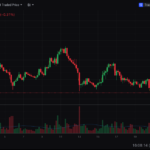The stablecoin USDT has marked a significant milestone, with its supply on Ethereum surpassing $60 billion, outpacing TRON’s approximately $58 billion for the first time since July 2022, according to data from DeFiLlama. This shift highlights Ethereum’s growing role in the stablecoin market despite TRON’s longstanding dominance.
Current USDT Landscape
As of now, Ethereum holds 45.32% of the total USDT supply, while TRON follows closely with 43.57%. Binance Smart Chain accounts for 3.67%, and Arbitrum holds 2.33%. Other blockchains collectively represent less than 1% of the USDT supply.
Overall, USDT’s market capitalization has soared to an all-time high of $133 billion, solidifying its position as the leading stablecoin with a 70.10% dominance in the stablecoin market. For comparison, USDC, issued by Circle, ranks second with a $38.6 billion market cap, followed by USDS with $5.2 billion.
Why the Shift Matters
The growing USDT supply on Ethereum could be attributed to the blockchain’s broader adoption for decentralized finance (DeFi) and institutional-grade applications. Ethereum’s versatility and network effects are making it a preferred platform for financial products, even as TRON remains popular for low-cost transactions and transfers in regions with high crypto adoption.
This transition highlights a dynamic market where USDT continues to play a central role in bridging liquidity across ecosystems.
Investor Takeaways
The rise of USDT supply on Ethereum could indicate growing confidence in Ethereum’s infrastructure for stablecoin-related activities, potentially benefiting projects and tokens that leverage the network. However, investors should also watch for potential challenges, such as transaction fees on Ethereum, which remain higher than on TRON or Binance Smart Chain.
Conclusion
The shift in USDT supply dominance from TRON to Ethereum underscores the evolving landscape of blockchain adoption. With USDT dominating the stablecoin market, it continues to be a cornerstone of crypto liquidity. For investors, monitoring these supply dynamics offers insights into broader trends in blockchain use and capital flow.
Disclaimer: This article is for informational purposes only and does not constitute financial advice. Always consult a financial advisor before making investment decisions.







